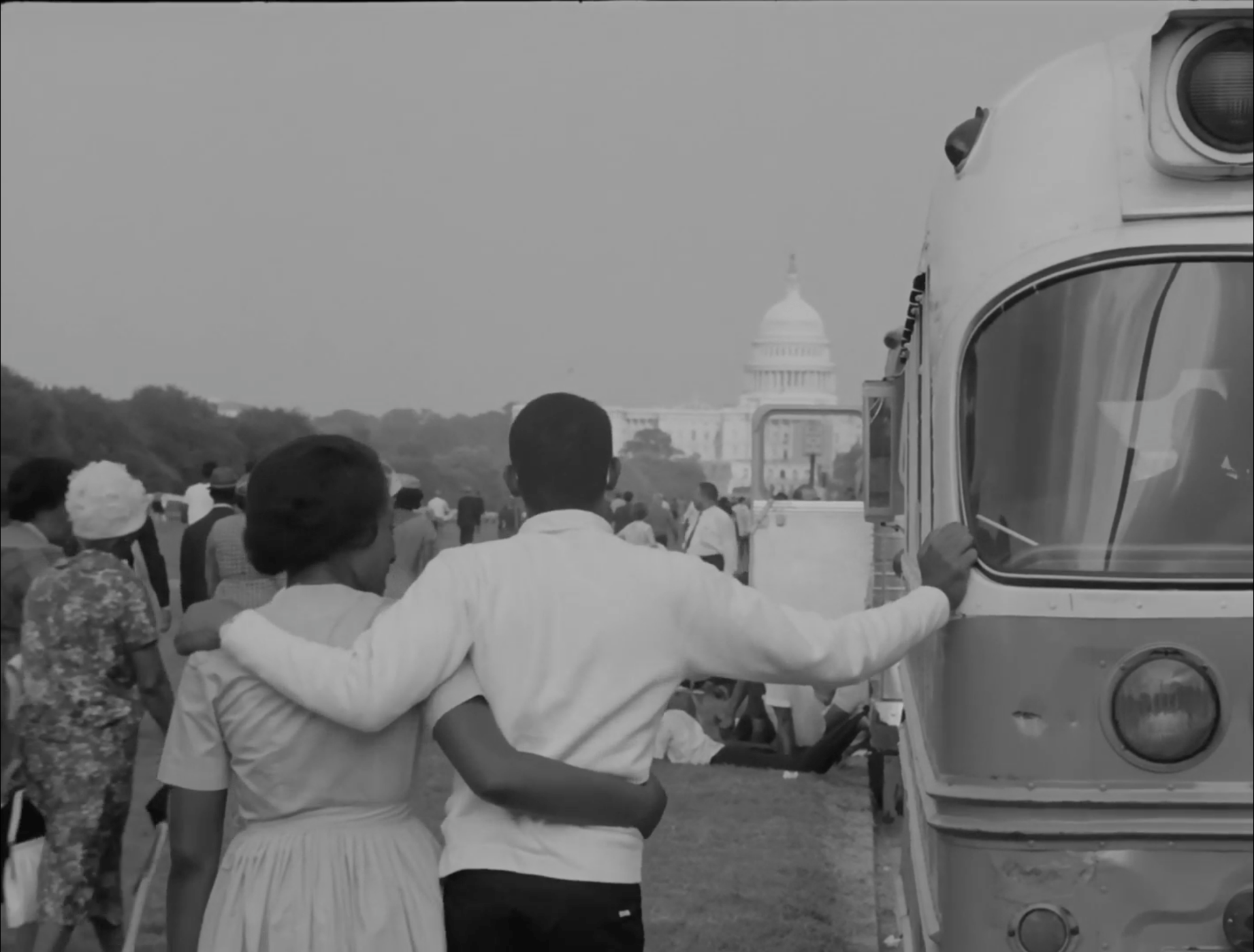Themes

Two marchers survey the US Capitol. Still from The March (1964) by James Blue.
President Lyndon B. Johnson watched the film on January 19, 1964. Keen to pass the Civil Rights Act of 1964, he feared that southern senators might withhold their votes to protest the film’s depiction of the United States as a racist country. In a February 6, 1964, conversation with the NAACP’s Roy Wilkins, Johnson said he had “a real difficult problem” with The March, although he affirmed the film’s positive qualities.
Many critics today believe that the film is ahistorical, holding that it depicts interracial harmony as a norm and that it airbrushes and sanitizes the conflicts within the civil rights movement and the intransigence of the Kennedy administration. They note that in the immediate aftermath of the March, American apartheid remained intact.
For more on responses to The March, see LBJ’s “Difficult Problem” and Conflicted Legacy.
